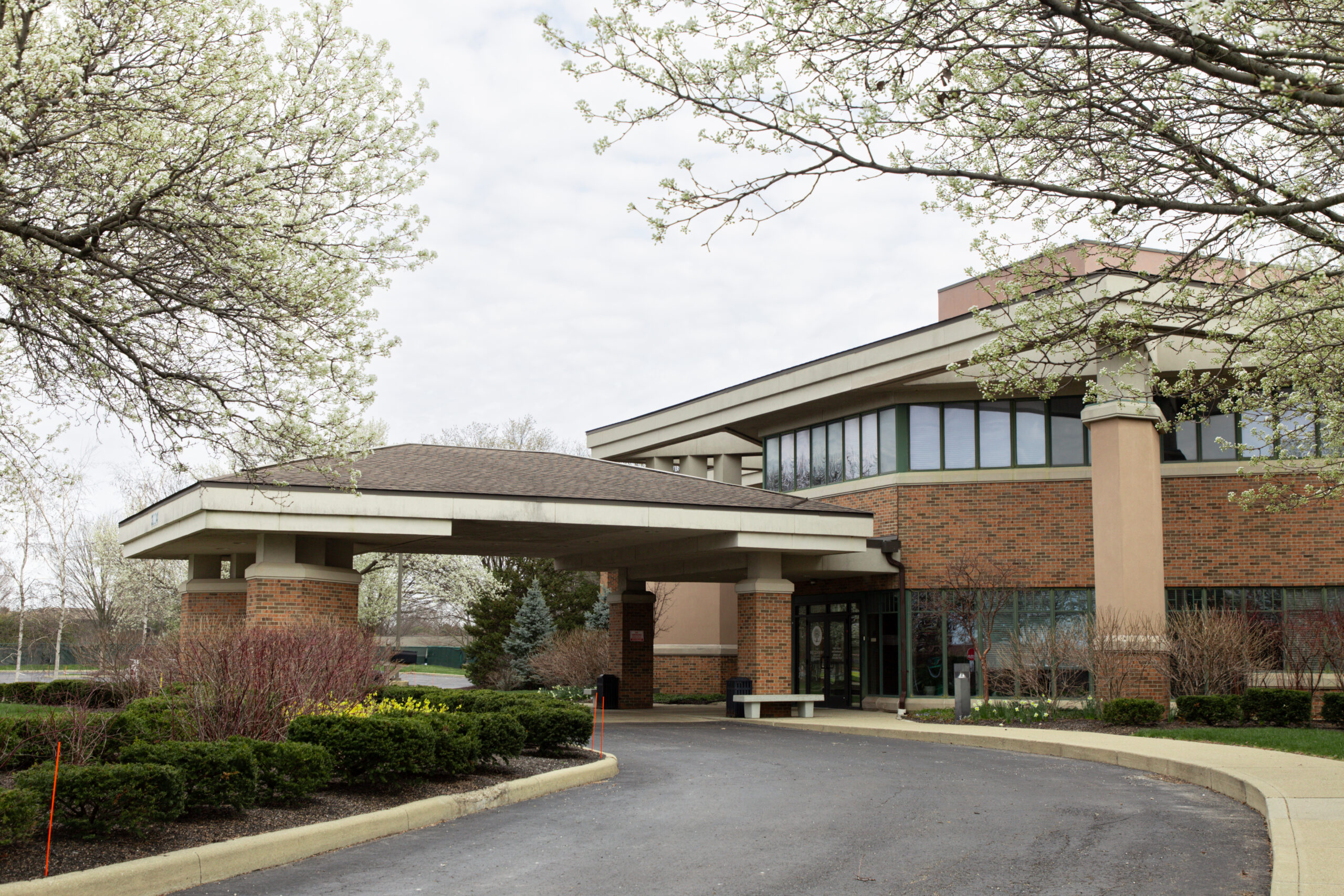Persistent depressive disorder (PDD), formerly known as dysthymia, represents one of the most misunderstood and underdiagnosed forms of depression. Unlike the episodic nature of major depression, this chronic condition creates a persistent shadow that can last for years, affecting millions of Americans who may not even realize they have a treatable medical condition.
Often described as a “low-grade depression,” dysthymia should not be dismissed as merely a gloomy personality or a temporary rough patch. This chronic mood disorder can be as disabling as major depression and significantly impacts quality of life, relationships, and overall well-being.
What Is Dysthymia (Persistent Depressive Disorder)?
Persistent depressive disorder is a form of chronic depression characterized by a depressed mood that occurs for most of the day, more days than not, for at least two years in adults or one year in children and adolescents. The condition represents a consolidation of what were previously separate diagnoses in earlier versions of the Diagnostic and Statistical Manual of Mental Disorders (DSM).
The term “persistent” accurately captures the enduring nature of this condition. Unlike major depressive episodes that may come and go, PDD creates a consistent pattern of depressive symptoms that become so familiar to individuals that they may assume this is simply “how they are.” This normalization of chronic low mood often delays proper diagnosis and treatment.
The disorder affects approximately 1.5% of adults in the United States annually, with lifetime prevalence estimates reaching 2.5%. However, these numbers likely underrepresent the true prevalence, as many individuals with PDD never seek treatment, attributing their persistent low mood to personality traits or life circumstances.
Recognizing the Signs and Symptoms
The hallmark of persistent depressive disorder is a chronically depressed mood accompanied by additional symptoms that significantly impact daily functioning. The primary symptoms include:
Core Emotional Symptoms: The most prominent feature is a persistent feeling of sadness, emptiness, or hopelessness that colors most experiences. Individuals often describe feeling “down in the dumps,” emotionally flat, or consistently pessimistic. This mood disturbance becomes so pervasive that periods of normal mood rarely last more than two months at a time.
Physical and Cognitive Symptoms: Sleep disturbances manifest as either difficulty falling asleep, staying asleep, or sleeping too much. Appetite changes can swing between eating too little or overeating, often leading to unwanted weight changes. Fatigue and low energy become constant companions, making even routine tasks feel overwhelming.
Concentration difficulties and indecisiveness plague individuals with PDD, affecting work performance and daily decision-making. The persistent mental fog can make it challenging to focus on tasks, remember important information, or make even simple choices.
Self-Perception and Social Impact: Low self-esteem becomes deeply ingrained, with individuals viewing themselves as inadequate, unsuccessful, or fundamentally flawed. This negative self-perception often leads to social withdrawal and avoidance of activities that might bring joy or satisfaction.
The chronic nature of these symptoms creates a self-perpetuating cycle where the depression itself becomes evidence of personal failure, further reinforcing negative self-concepts and hopelessness about the future.
Understanding the Complex Causes
The development of persistent depressive disorder involves a complex interplay of biological, psychological, and environmental factors. No single cause can explain why some individuals develop this chronic condition while others do not.
Neurobiological Factors: Research suggests that brain chemistry imbalances, particularly involving neurotransmitters like serotonin, dopamine, and norepinephrine, play a significant role in PDD. Neuroimaging studies have identified structural and functional differences in brain regions associated with mood regulation, including the prefrontal cortex, hippocampus, and amygdala.
These neurobiological changes may represent both a cause and consequence of chronic depression, creating alterations in brain circuits that regulate emotion, motivation, and stress response.
Genetic Predisposition: Family history studies consistently show higher rates of depressive disorders in relatives of individuals with PDD. While no specific genes have been definitively linked to the disorder, the genetic component likely involves multiple genes that influence vulnerability to depression when combined with environmental triggers.
Environmental and Psychological Factors: Chronic stress, traumatic experiences, and adverse childhood events significantly increase the risk of developing PDD. Early experiences of neglect, abuse, or loss can alter stress response systems and emotional regulation patterns that persist into adulthood.
Personality traits such as neuroticism, pessimism, and low self-esteem create psychological vulnerability to developing and maintaining chronic depression. These traits may represent both risk factors for and consequences of persistent depressive episodes.
Social and Cultural Influences: Social isolation, lack of meaningful relationships, and limited social support networks contribute to both the development and maintenance of PDD. Cultural factors, including stigma surrounding mental health and societal attitudes toward seeking help, can significantly impact symptom expression and treatment-seeking behavior.
The Diagnostic Process
Diagnosing persistent depressive disorder requires careful evaluation by qualified mental health professionals. The diagnostic process involves several key components designed to rule out other conditions and confirm the presence of PDD.
Clinical Interview and Assessment: Mental health professionals conduct comprehensive interviews to assess symptom history, duration, and impact on functioning. The evaluation includes detailed exploration of mood patterns, associated symptoms, and periods of symptom remission or worsening.
Standardized assessment tools and questionnaires may be used to quantify symptom severity and track changes over time. These instruments help ensure accurate diagnosis and provide baseline measurements for monitoring treatment progress.
Medical Evaluation: Physical examination and laboratory tests are essential to rule out medical conditions that can mimic or contribute to depressive symptoms. Thyroid disorders, vitamin deficiencies, autoimmune conditions, and neurological problems can all present with depression-like symptoms.
A thorough medication review is crucial, as certain medications can cause or worsen depressive symptoms. Substances including alcohol, drugs, and even some prescription medications can contribute to chronic mood problems.
Differential Diagnosis: Distinguishing PDD from other mood disorders requires careful attention to symptom patterns and course. Major depressive disorder episodes may occur superimposed on persistent depressive disorder, creating what clinicians call “double depression.”
Bipolar disorder must be ruled out through careful assessment of any history of manic or hypomanic episodes. Other conditions such as cyclothymic disorder, adjustment disorders, and personality disorders may present with similar symptoms but require different treatment approaches.
Comprehensive Treatment Approaches
Effective treatment of persistent depressive disorder typically involves a combination of interventions tailored to individual needs and circumstances. The chronic nature of the condition often requires long-term treatment strategies and ongoing management.
Psychotherapy Interventions: Cognitive Behavioral Therapy (CBT) has demonstrated significant efficacy in treating PDD. This approach helps individuals identify and modify negative thought patterns and behaviors that maintain depression. CBT techniques include cognitive restructuring, behavioral activation, and problem-solving training.
Interpersonal Therapy (IPT) focuses on improving relationship patterns and social functioning. This approach addresses grief, role disputes, role transitions, and interpersonal skill deficits that contribute to persistent depression.
Cognitive Behavioral Analysis System of Psychotherapy (CBASP) was specifically developed for chronic depression. This approach combines cognitive, behavioral, and interpersonal strategies while emphasizing the development of problem-solving skills and interpersonal effectiveness.
Psychodynamic therapy may benefit individuals with significant early trauma or complex psychological issues. This approach explores unconscious patterns and past experiences that contribute to current difficulties.
Pharmacological Treatment: Antidepressant medications play a crucial role in treating PDD, often providing the neurochemical foundation necessary for psychotherapy to be effective. Selective serotonin reuptake inhibitors (SSRIs) are typically first-line treatments due to their favorable side effect profiles.
Serotonin-norepinephrine reuptake inhibitors (SNRIs) may be particularly beneficial for individuals with significant fatigue and concentration problems. Atypical antidepressants such as bupropion or mirtazapine might be considered based on specific symptom profiles and individual response.
Treatment resistance is not uncommon in PDD, and medication adjustments, combinations, or augmentation strategies may be necessary. The chronic nature of the condition often requires long-term medication maintenance to prevent relapse.
Lifestyle and Complementary Interventions: Regular exercise has demonstrated antidepressant effects comparable to medication for some individuals. Physical activity promotes neuroplasticity, improves mood regulation, and provides structure and achievement opportunities.
Sleep hygiene interventions address the sleep disturbances common in PDD. Consistent sleep schedules, sleep environment optimization, and addressing sleep disorders can significantly impact mood and energy levels.
Nutrition interventions may include addressing deficiencies in nutrients such as vitamin D, B vitamins, and omega-3 fatty acids. While not curative, nutritional optimization supports overall brain health and may enhance treatment response.
Mindfulness-based interventions and stress reduction techniques help individuals develop healthier relationships with their thoughts and emotions. These approaches can reduce rumination and increase awareness of mood patterns.
Long-term Management and Prognosis
Persistent depressive disorder is a chronic condition that typically requires ongoing management rather than cure. However, with appropriate treatment, individuals can experience significant improvement in symptoms and quality of life.
Treatment Response and Recovery: Research indicates that combination treatment with both psychotherapy and medication generally produces better outcomes than either treatment alone. Response rates improve with longer treatment duration, emphasizing the importance of patience and persistence in the recovery process.
Full remission of symptoms is possible, but many individuals experience partial improvement that nonetheless represents meaningful enhancement in functioning and life satisfaction. The goal of treatment shifts from complete symptom elimination to optimal functioning and quality of life.
Relapse Prevention: The chronic nature of PDD means that relapse prevention strategies are essential components of long-term management. Continued medication treatment, maintenance psychotherapy sessions, and lifestyle modifications help prevent symptom recurrence.
Early warning sign recognition and prompt intervention can prevent minor setbacks from developing into full relapse episodes. Developing coping skills and support systems provides resilience during challenging periods.
Functional Improvement: Treatment success in PDD is measured not only by symptom reduction but also by improvements in social, occupational, and personal functioning. Many individuals experience enhanced relationships, increased productivity, and renewed engagement in meaningful activities.
Quality of life improvements often continue even after formal treatment ends, as individuals develop and maintain healthier coping strategies and life patterns.
Impact on Daily Life and Relationships
Persistent depressive disorder significantly affects multiple areas of life, often in ways that become so gradual and pervasive that they’re accepted as normal. Understanding these impacts helps both individuals and their loved ones recognize the scope of the condition and the importance of treatment.
Occupational and Educational Effects: Chronic low mood and concentration difficulties can significantly impact work or academic performance. Individuals with PDD may struggle with decreased productivity, difficulty making decisions, and problems with memory and focus. The persistent nature of symptoms means that these challenges don’t have clear beginning or end points, making them particularly difficult to address.
Career advancement may be limited by self-doubt, lack of energy for professional development, and difficulty advocating for oneself. Students may experience declining grades, difficulty completing assignments, and reduced participation in educational activities.
Relationship and Social Consequences: The emotional flatness and withdrawal common in PDD can strain relationships with family, friends, and romantic partners. Loved ones may interpret symptoms as personal rejection, lack of interest, or character flaws rather than recognizing them as symptoms of a medical condition.
Social anxiety and negative self-perception often lead to isolation and avoidance of social situations. This withdrawal further reinforces feelings of loneliness and inadequacy, creating a self-perpetuating cycle of social disconnection.
Physical Health Implications: Chronic stress and depression can contribute to various physical health problems, including cardiovascular disease, immune system dysfunction, and chronic pain conditions. Sleep disturbances and appetite changes may lead to additional health complications.
The lack of energy and motivation common in PDD can result in poor self-care, including inadequate nutrition, lack of exercise, and neglect of medical care. These factors compound the overall health impact of the condition.
Co-occurring Conditions and Complications
Persistent depressive disorder rarely occurs in isolation and frequently co-exists with other mental health and medical conditions. Understanding these relationships is crucial for comprehensive treatment planning.
Anxiety Disorders: Anxiety disorders, particularly generalized anxiety disorder and social anxiety disorder, commonly co-occur with PDD. The combination creates additional challenges, as anxiety symptoms can worsen depression and vice versa. Treatment must address both conditions simultaneously for optimal outcomes.
Substance Use Disorders: Individuals with PDD may turn to alcohol or drugs as a way to self-medicate their chronic symptoms. Substance use can temporarily alleviate depression but ultimately worsens the condition and creates additional problems. Integrated treatment addressing both depression and substance use is essential.
Personality Disorders: Certain personality disorders, particularly borderline personality disorder and avoidant personality disorder, show high rates of co-occurrence with PDD. The relationship between these conditions is complex, with shared risk factors and overlapping symptoms that require specialized treatment approaches.
Medical Conditions: Chronic medical conditions such as diabetes, heart disease, and autoimmune disorders are more common in individuals with PDD. The bidirectional relationship between physical and mental health means that addressing medical conditions can improve depression, while treating depression can enhance physical health outcomes.
Special Considerations for Different Populations
Children and Adolescents: In young people, PDD requires only one year of symptoms for diagnosis rather than the two years required in adults. Early onset PDD can significantly impact development, academic achievement, and social relationships. Treatment must consider developmental factors and may require family involvement and school-based interventions.
Older Adults: Depression in older adults is often underdiagnosed and undertreated, with symptoms sometimes attributed to normal aging or medical conditions. PDD in this population may present differently, with more physical symptoms and cognitive complaints. Treatment considerations include medication interactions and age-related changes in drug metabolism.
Women: PDD affects women at approximately twice the rate of men. Hormonal factors, including reproductive events such as pregnancy, postpartum period, and menopause, can influence symptom expression and treatment response. Gender-specific factors such as societal roles and stressors may also contribute to the higher prevalence.
When to Seek Professional Help
Recognizing when professional help is needed can be challenging with PDD, as symptoms often develop gradually and become normalized over time. However, certain signs indicate the need for immediate evaluation and treatment.
Persistent feelings of sadness, hopelessness, or emptiness that last for months or years require professional assessment. If these feelings significantly impact work, relationships, or daily activities, treatment can provide substantial benefits.
Thoughts of death or suicide, even if vague or passive, always warrant immediate professional intervention. The chronic nature of PDD can lead to accumulated hopelessness that increases suicide risk over time.
Significant changes in sleep, appetite, energy, or concentration that persist for weeks or months should prompt evaluation. When family members, friends, or colleagues express concern about mood or behavior changes, their observations often provide valuable insight.
The Path Forward: Hope and Recovery
While persistent depressive disorder presents significant challenges, it’s important to emphasize that effective treatments are available and recovery is possible. The chronic nature of the condition doesn’t mean it’s permanent or untreatable.
Modern understanding of PDD has led to more targeted and effective treatment approaches. Research continues to identify new therapeutic strategies and improve existing interventions. The combination of evidence-based psychotherapy and medication, along with lifestyle modifications and social support, provides a comprehensive framework for recovery.
Many individuals with PDD go on to live fulfilling, productive lives after receiving appropriate treatment. The key is recognizing that persistent sadness and low mood are not character flaws or permanent aspects of personality but symptoms of a treatable medical condition.
Recovery from PDD is often a gradual process that requires patience, persistence, and professional support. However, the journey toward improved mental health and enhanced quality of life is both possible and worthwhile. With proper treatment and ongoing management, individuals with persistent depressive disorder can reclaim their lives and discover renewed hope for the future.
The most important step is reaching out for help. Mental health professionals have the training and expertise to provide accurate diagnosis and effective treatment. Support from family, friends, and community resources enhances the recovery process and provides the encouragement needed during challenging times.
Remember that seeking help for persistent depressive disorder is a sign of strength, not weakness. Taking action to address chronic depression demonstrates self-awareness, courage, and commitment to personal well-being. The support and treatment necessary for recovery are available, and the decision to seek help represents the first step toward a brighter future.
















